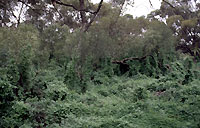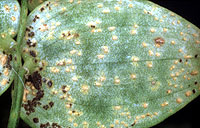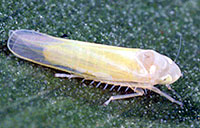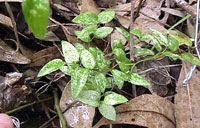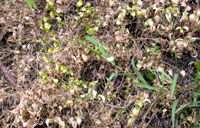| Entomology Home |

an overview
of biological control research in CSIRO Entomology
| Biological Control Home | ||
|
|
||
| Aquatic Weeds » | ||
|
|
||
|
|
||
| Biopesticides | ||
| Entomology Home | ||
| Biological Control Home > Classical biocontrol > Environmental weeds |
Bridal creeper, Asparagus asparagoides
Bridal creeper,
a South African invader, infests native vegetation in all southern
Australian states. It forms massive tuber mats in the soil and impenetrable
thickets of foliage. The tuber mats prevent native plant seedlings
from establishing and birds eating fruits spread seeds of the weed. Both the leafhopper and the rust fungus are causing impressive damage at release sites in south-eastern New South Wales and Western Australia and are now part of a national redistribution program. Collaborative studies, with personnel from other agencies from across southern Australia, are underway to measure the impact of these two agents on populations of bridal creeper.
Supported by: Natural Heritage Trust, Cooperative Research Centre for Australian Weed Management, Australian and New Zealand Environment Conservation Council, Collaborators: Victorian Department of Primary Industries, NSW Agriculture, South Australian Animal and Plant Control Commission
|

